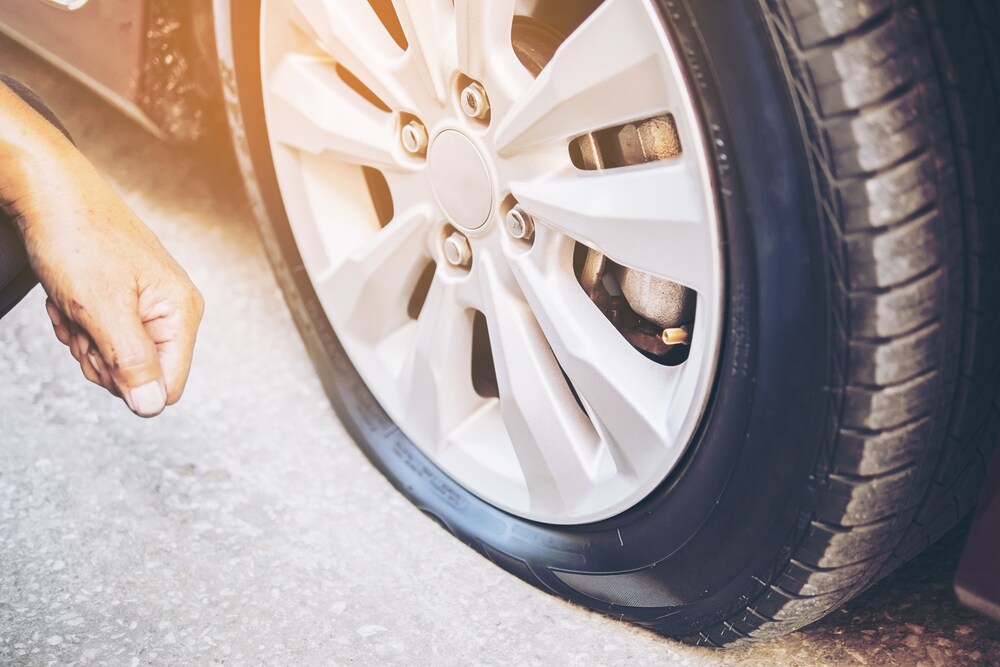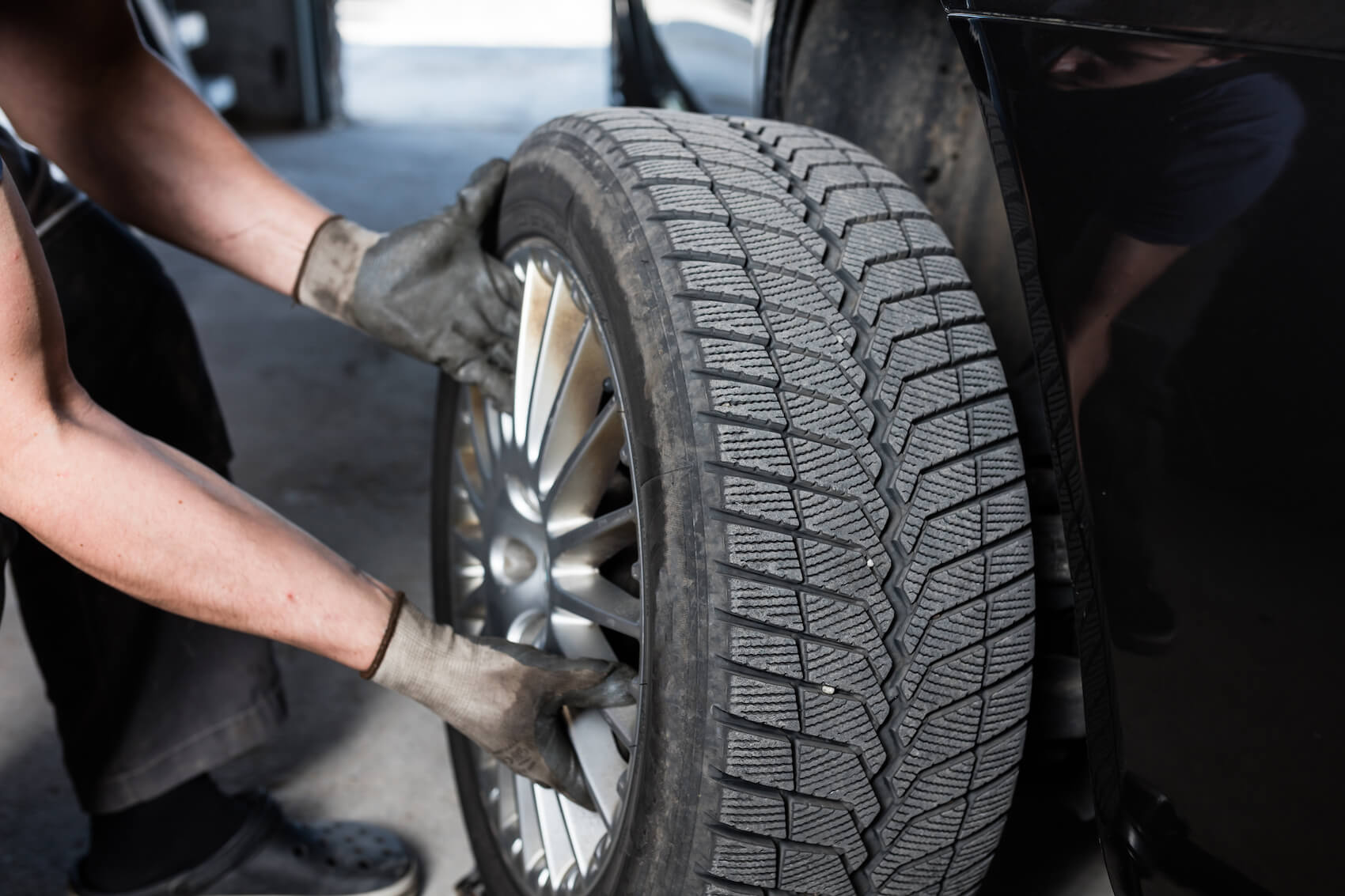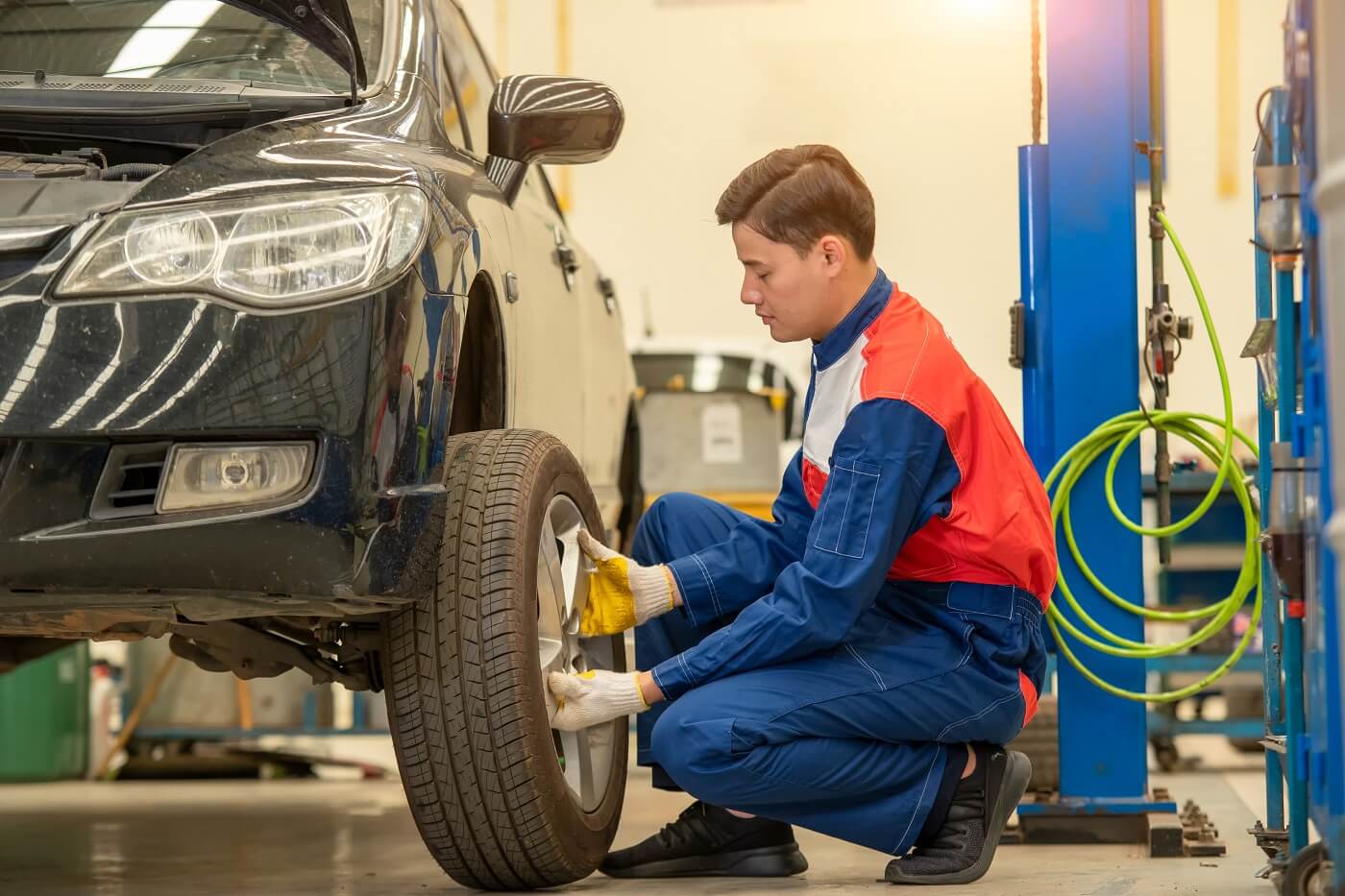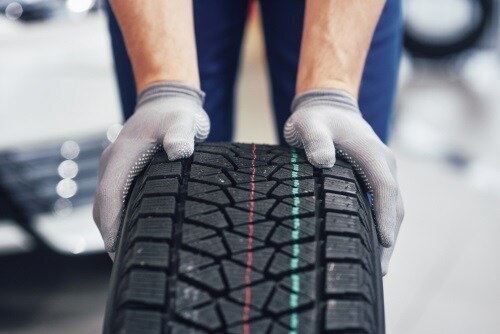How to Fix a Flat Tire: Step by Step

Getting a flat tire is likely to happen at one point or another. That's why it's good to know how to get your car rolling smoothly again. At Ray Price Stroud Ford, we strive to keep drivers near Stroudsburg, East Stroudsburg, Wind Gap, and Stockertown, Pennsylvania, informed on how they can properly maintain their cars.
To learn all about the process of fixing a flat tire, keep on reading our comprehensive “How to Fix a Flat Tire” guide today!
You can usually repair a tire if the puncture is less than a quarter inch wide and located on the tread—not the sidewall. However, repairs aren't safe if the damage is on the shoulder or sidewall, if there's a blowout, or if the tire has multiple punctures close together. When in doubt, have one of our service technicians inspect it to ensure safe driving.

How to Repair a Flat Tire
If you hit a curb and notice poor handling or even a flapping sound coming from one of your tires, you likely have a flat tire. Before you decide to attach a spare, though, one option is to plug it using a tire plug kit. This temporary fix can help you drive short distances safely until permanent repair or replacement can be performed.
Step 1: Locate the Leak

If your tire has a minor puncture from a nail or other debris, there will be a leak that you'll have to locate and plug up.
In some cases, you may be able to visually inspect the tire to find a physical puncture. However, there may be times when the puncture isn't immediately apparent. In that case, just fill up the tire and pinpoint any kind of hissing sounds from escaping the air.
Step 2: Loosen the Lug Nuts of the Tire

Now it's time to loosen the lug nuts from the tire, but don't remove them. After the nuts are loosened, you'll want to lift the car up with a jack. Once you have the car in a steady position, you can remove the wheel.
Step 3: Clean the Puncture

Once you've removed the wheel from the wheelbase, it's time to prepare the puncture to be filled up.
The first step to preparing the puncture is to clean it with something called a rasp tool. If you're using a tire repair kit, this should be included with the package.
Simply push the rasp in and out of the hole several times to remove dirt or other debris and ensure a proper fit for the rubber plug.
Step 4: Fill in the Hole

Once you've properly cleaned your tire, it's time to fill it in with the rubber plug in your kit.
Simply apply an adhesive to the plug and insert it into the hole in your tire. Let the plug sit for a few minutes to allow it to fully set before continuing on with the repair process.
Step 5: Refill Your Tire

Once your plug has set, it's time to refill your tire back to the target tire pressure. Consult your owner's manual to find the ideal tire pressure for your specific tires.
Step 6: Find Permanent Replacements for Your Tires

Once you're back on the road with a repaired tire, it's time to get the affected tire fully replaced.
While a tire repair can be an effective short-term solution, your tire won't be able to stand extended use after the repair. It's best to visit a service center to have your tire replaced to ensure you have sturdy tires long into the future.

How to Secure the Wheels
After replacing a flat tire, tighten the lug nuts in a star pattern to ensure even pressure on the wheel. Use a wrench to secure them snugly, but don’t overtighten. Once the car is lowered back to the ground, recheck each nut for tightness. Drive a short distance, then retighten to make sure everything stays secure.

Industry Standards for Tire Repairs
According to the United States Tire Manufacturers Association (USTMA), a tire can only be repaired if the puncture is a quarter inch or smaller and located in the tread area.* Repairs must include both a patch and a plug from the inside of the tire. Punctures in the sidewall or shoulder are considered non-repairable under USTMA guidelines.
The Tire Industry Association (TIA) supports USTMA standards, emphasizing that safe repairs require removing the tire from the rim and using a combination patch-plug method. TIA also warns against external-only fixes like string plugs and advises against repairing tires with multiple punctures that are too close together. All repairs should follow strict safety procedures to restore full tire performance.

Look for Tires in Our Tire Shop
Shopping for tires at our dealership is easy and productive. With the help of our tire shop team, you can find the right fit for your vehicle, driving habits, and budget. We carry trusted brands and offer professional installation, so you can leave with confidence. Let us guide you through all the kinds of tires you could consider, including all-season, performance, or off-road tires.
FAQs
Why can't a tire be repaired if the puncture is on the sidewall?

Sidewall damage weakens the tire structure so that it makes repairs unsafe. Replacement will be the only safe and reliable option.
When is a puncture too large to repair?

If the puncture is more than a quarter-inch wide, it compromises the tire’s integrity and must be replaced instead of repaired.
Why aren’t tire plugs recommended?

Tire plugs alone can fail over time. Proper repairs require removing the tire and using a patch-plug combo from the inside.
Fix a Flat Tire near Stroudsburg PA
Having a flat tire isn't ideal, but it's easy to get back on the road with a quick fix. When you're done with the repair, just come visit us at Ray Price Stroud Ford, and we can replace your tire quickly.
If you're a driver near Stroudsburg, East Stroudsburg, Wind Gap, or Stockertown, PA, schedule an appointment with our service center today!
How can we help?
* Indicates a required field